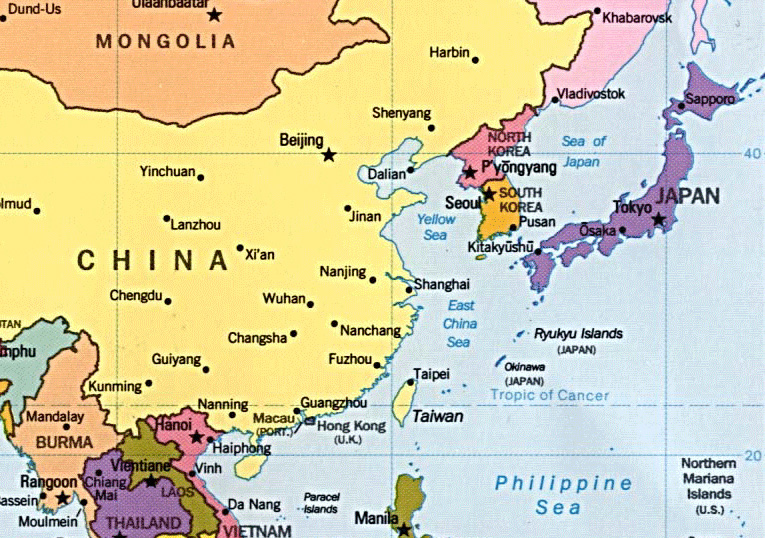The Peninsula
Navigating Contradictions in Asia

By Nicholas Hamisevicz
In a recent column in the New York Times, David Brooks describes the contradictory nature of the Olympic Games to argue that those working in business and politics must be able to embrace and work with opposite impulses in order to be successful. He notes that the world is a contradictory place as well, but he could have further elaborated the point. Those contradictions are best observed in Asia, and in particular East Asia.
Perhaps the ultimate dichotomy in Asia is seen on the Korean Peninsula. Despite a shared history, North and South Korea are politically, economically, militarily, and to a growing extent culturally, very different countries. This year, differences are clear as elections take place in South Korea while North Korea undergoes a familial leadership transition. The contrast was stark in April with South Koreans voting for their National Assembly Members while North Korean officials met privately to select their leaders. Moreover, dealing with threats, insults, and provocations, while maintaining some future hope for eventual unification, is a contradictory feeling that many South Koreans have lived with for a long time.
Yet the contradictory sentiments that have defined the early part of the Asian Century are between economics and security. Furthermore, this contrast is often played out through the impact of American and Chinese policies and the Sino-US relationship. Economically, China is the number one trading partner for North Korea, South Korea, Japan, Taiwan, and Australia. It is also seen as a vital economic partner for the United States, Indonesia, Vietnam, and the Philippines. Countries in the region perceive their economic success to be tied to the economic success of China.
The U.S. may be unable to regain the top economic position with many of Asian countries; however, it still must be heavily involved economically in the region. Thus, the big push for the U.S. to sign the KORUS FTA and move forward with Trans-Pacific Partnership negotiations. Economics and trade help drive the region forward and create a better environment for dealing with some of the historical animosities and security concerns in the region.
Despite the need for economic growth, often tightly connected with the rise of China, countries are still concerned with future security and stability in Asia. China’s growing military capabilities combined with its approach to disputed territories with multiple Asian nations has caused countries to lean toward the United States to provide security guarantees and prevent more threatening actions and demanding requests by China. The Obama Administration’s pivot to Asia, statements about U.S. interests in the South China Sea, and an agreement to rotate U.S. troops through Darwin, Australia have all been perceived as part of the security dynamic portion of this contradictory Asia.
David Brooks described the contradictory world as a “system of clashing waves that can never fully be reconciled.” U.S. leadership in Asia is the way to prevent those clashing waves from damaging or destroying the development of nations in the region. At its best, the U.S. can create an atmosphere where countries can make decisions based on their own interests without being limited in responses or pressured to concede by stronger powers. Navigating these troublesome waters with contradictory waves will be a major challenge for the Asian Century. However, strong U.S. leadership in economics and security can provide the freedom needed for countries to maneuver themselves safely toward greater prosperity.
Nicholas Hamisevicz is the Director of Research and Academic Affairs for the Korea Economic Institute. The views represented here are his own.
